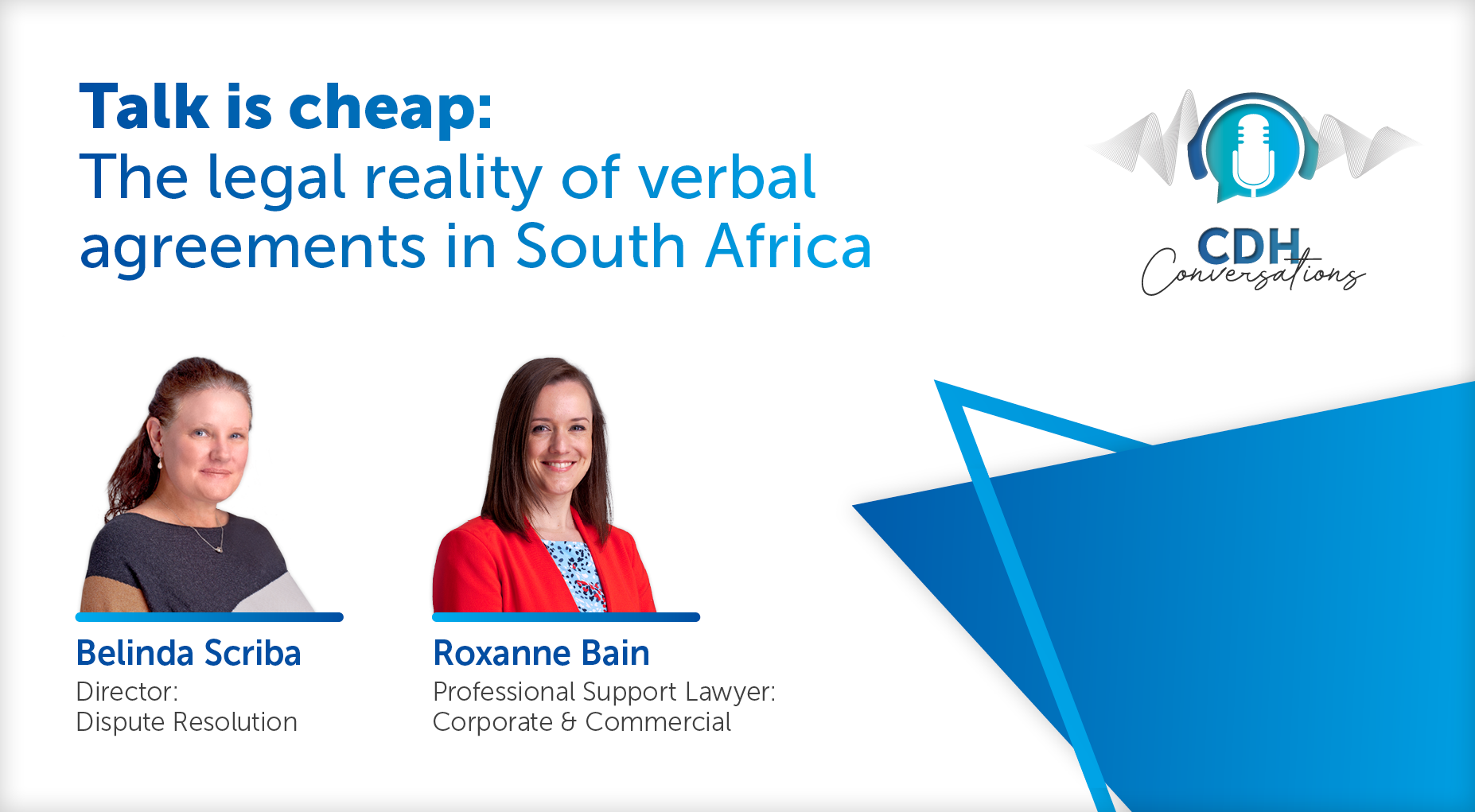Unpacking the fundamentals: Proposed changes to the BEE codes
The Draft General Principles Statement read with the Draft Skills Development Statement proposes to make some of the most fundamental changes to the BEE Codes since 2013:
(i) B-BBEE recognition for the provision of bursaries for black students at Higher Education Institutions (thus creating more recognisable benefit to the private sector for funding Higher Education);
(ii) enhanced B-BBEE recognition for job creation for black youth; and
(iii) enhanced B-BBEE recognition for large enterprises (with R50million+ turnover) which will allow them to also qualify for deemed level 2 or level 1 B-BBEE recognition based solely on black ownership of at least 51% or 100% determined using the flow through (and no other) principle.
While some of the detail on how to achieve such benefits may need some tweaking, the principles ought to be welcomed.
A Snapshot: Draft General Principles Statement
Key amendments to the General Principles Statement include the introduction of the Youth Employment Service Initiative (YES Initiative) and B-BBEE recognition for the Yes initiative; the enhanced B-BBEE recognition level for certain large enterprises; for the measurement of unincorporated joint ventures (UJVs); clarifications in respect of exempted micro enterprises (EMEs) and qualifying small enterprises (QSEs):
- 51% Black-owned and 100% Black-owned EMEs and QSEs that seek to benefit from the enhanced recognitions principles can only do so if their ownership has been assessed using the flow through principle, and not the modified flow through principle. These changes are unsurprising given the B-BBEE Commission’s position on this.
- a significant proposed change is that a large enterprise (ie an enterprise with an annual total revenue of R50million or more) that is 100% Black owned (measured using only the flow-through principle) will qualify as a level one contributor, while a large enterprise that is at least 51% Black-owned (measured using only the flow-through principle) will qualify as a level two contributor. Such large enterprises will only be required to obtain B-BBEE verification certificates verifying their ownership.
- UJVs will be required to compile a consolidated verification certificate which shall consolidate the verified compliance data of joint venture partners as if the measured entities were a single entity. The scores of each such entity shall be weighted according to their proportionate share in the joint venture and added together for a combined score of 100. There are specific rules in order to deal with EMEs and QSEs that form part of UJVs. The B-BBEE certificate issued to a UJV shall be valid for 12 months and shall only be applicable to the particular project.
- the sub-minimum requirement for Skills Development (being 40% of the total weighting points) and for Enterprise and Supplier Development (now clarified to be 40% of the weighting points for each of the three categories) will exclude bonus points in determining whether the
sub-minimum has been met. - the most significant proposal in the Draft General Principles Statement in respect of enhanced B-BBEE recognition for the achievement of targets in respect of the YES Initiative, which is aimed at job creation for Black youth (ages 18 to 35). In order for a measured entity to be eligible for enhanced B-BBEE recognition through the YES Initiative it must meet certain qualification criteria, such as, in the case of a large enterprise, it must have achieved the sub-minimum for each priority element or an average of 50% across all three priority elements; must achieve the maximum points for item 2.1.1.2 (New - skills development expenditure on bursaries for black students and Higher Education Institutions) on the Skills Development Scorecard, and ensure that it maintains or improves its B-BBEE status level.
- A measured entity that participates in the YES Initiative must determine its YES target for new job creation based on various principles set out in the Draft General Principles Statement. Entities that are unable to create a sufficient number of new jobs in order to meet their targets may also sponsor new placements in EMEs or QSEs.
- If the YES target has been met or exceeded together with the percentage of absorption into the workforce of such individuals, a YES Initiative entity could move up 1 or 2 B-BBEE recognition levels on the generic scorecard.
A Snapshot: Draft Skills Development Statement
Key amendment which have been proposed in the Draft Skills Development Statement include the recognition of expenditure on bursaries for Black students at Higher Education Institutions as skills development expenditure, and a revised formula to calculate compliance in respect of the EAP targets for racial sub-categories.
- skills development expenditure on bursaries for Black students at Higher Education Institutions is proposed as a separate measure under item 2.1.1.2 of the skills development scorecard. The compliance target is 2.5% of the leviable amount for 4 weighting points.
- It is proposed that the target for skills development expenditure on learning programmes in the learning programme matrix be reduced from 6% to 3.5% of the leviable amount for 6 (instead of 8) weighting points.
- Double counting in respect of certain items on the skills development scorecard is now expressly excluded.
- The provision that legitimate training costs such as accommodation, catering and travelling cannot exceed 15% of the total value of skills development expenditure will not be applied in respect of the target for bursaries for black students at Higher Education Institutions.
- The revised formula for calculations based on the EAP targets indicate that the targets and points must be calculated separately for each
sub-category, and provides that the EAP targets must be adjusted to exclude white employees. The formula is more detailed, unwieldy
and needs some clarification on how it is intended to work.
The information and material published on this website is provided for general purposes only and does not constitute legal advice. We make every effort to ensure that the content is updated regularly and to offer the most current and accurate information. Please consult one of our lawyers on any specific legal problem or matter. We accept no responsibility for any loss or damage, whether direct or consequential, which may arise from reliance on the information contained in these pages. Please refer to our full terms and conditions. Copyright © 2026 Cliffe Dekker Hofmeyr. All rights reserved. For permission to reproduce an article or publication, please contact us cliffedekkerhofmeyr@cdhlegal.com.
Subscribe
We support our clients’ strategic and operational needs by offering innovative, integrated and high quality thought leadership. To stay up to date on the latest legal developments that may potentially impact your business, subscribe to our alerts, seminar and webinar invitations.
Subscribe




